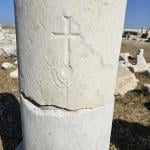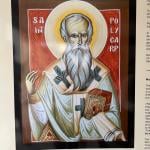One of the curiosities in Holifield’s study is the appearance of a Protestant form of what Louis Bouyer and others have called “mysteriological piety” among Puritans. Here, for instance, is Holifield’s summary of Perkins’s interpretation of the rite of the Supper:
“Taking up the elements, the minister sealed and proclaimed the activity of God in electing his Son as a Mediator. By blessing the elements, thus separating from their common unto a holy use, he confirmed and taught that God sent Christ to perform his holy offices of prophet, priest, and king. When he broken the bread and poured the wine, the minister silently through graphically described the passion of Christ, and in distributing the elements, he sealed and asserted God’s offer of Christ unto all and his effective conveyance to the faithful. By receiving the elements, the communicant testified to his own ‘apprehension’ and ‘application’ of Christ by faith.” He adds that ministers interpreted the baptismal rite in a similar way, “revealing the extent to which they considered both sacraments to be visible sermons” in which “every action conveyed and idea, every gesture proclaimed a doctrine.”











